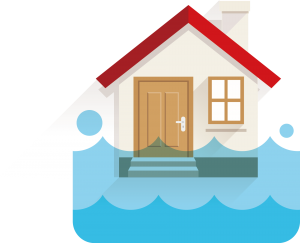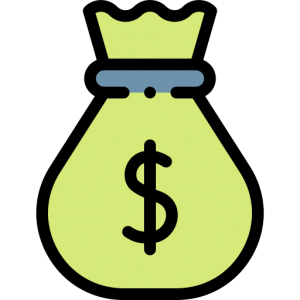Public Liability Insurance Australia
Running any kind of business is tough. Not a day when you can be completely complacent that you won’t be blindsided by any unexpected event. But you can reach a certain level of peace with the right preparations.
Whether you’re a small business owner, sole trader, sub-contractor or self-employed, it is advised to get public liability insurance.
As the owner, you have the full legal responsibility to ensure the safety of the customers, business partners, suppliers, and the larger community, including their properties. Although it has certain limitations, this type of insurance is good investment no matter the risk profile your business has.
Public liability insurance in Australia is designed to provide reasonable protection for your business in case a customer, a business partner, a supplier, or other members of the community sustain bodily injury or property damage due to your business activities.
What is Public Liability Insurance Australia?
Public Liability Insurance (Public and Products Liability Insurance) is a type of protection in the event that you are held liable for an injury or damage to property while you provide products or services. This type of insurance pays the compensation, legal settlements, and legal fees incurred during the litigation or as resolution.
Australian small businesses that interact with various people as part of their operations are encouraged to get public liability insurance due to the inevitable risks.
A customer might drop some items in your shop, or an employee might damage a customer’s property. It’s better to always assume the worst than be surprised with the costs of reparation, third party compensation, and legal defense.
Choosing a Public Liability Insurance Policy for Your Business
When choosing an insurance policy, it is essential to take into the account all the risks your business is subjected to, no matter the gravity.
It’s important to understand that there’s no such thing as one-size-fits all insurance policy in terms of public liability. This is due to the fact that different types of businesses have different risks.
Determine the risks you’re subjected to and use it when comparing quotes. A trustworthy insurance provider can guide you in choosing the most appropriate policy for your business.
What Does Public Liability Insurance Cover?
The nature and size of your business directly dictates the level of insurance it requires. For example, if you own an area for extreme sports, then your business has an inherent risk of physical injury. This means you need a more comprehensive policy, and chances are your premiums are higher.
Conversely, a bookstore owner generally has smaller risks and therefore requires a narrower coverage. Although acquiring a public liability insurance isn’t a legal obligation, you can be at peace knowing that a damage or injury won’t drain your resources.
Public Liability Insurance Coverage in Australia
Public liability insurance in Australia typically covers

Damage or loss of property
This covers any damage or loss of a third-party property that is beyond your control. You may also be held liable if the property is lost or damaged while being serviced or transported.

Legal costs
These include charges by your legal defense and settlements.

Third Party Injury
If a third party gets injured while in your business premises, your public liability insurance may cover the medical expenses.

Representation
This policy covers employees who are presenting you or your business during the unfortunate incident.

Reminder
Read the Public Disclosure Statement (PDS) of your policy to be fully aware of the coverage inclusions.
What Are Not Covered by Public Liability Insurance?
Before purchasing a public liability insurance, make certain that you are completely aware of what is and isn’t covered. Typically, this type of insurance excludes:

Injury of workers
This is why high risk businesses are encouraged to get a worker’s compensation insurance.

Punitive damages
These are the damages your company will have to pay should the court found out you were negligent.

Product recall
These are the costs incurred in case your products must be recalled from the market.

Gradual pollution
An environmental impairment insurance policy will shoulder the damages in case your facility causes any form of pollution.

Asbestos
This should be covered by an insurance designed specifically for any asbestos-related injury.

Aircraft products
These products are usually placed under certain aviation insurance policies.

Reminder
Wherever you’re operating in Australia, it is advised to check the state-specific public liability requirements with your policy provider.
What’s the Difference Between Public Liability Insurance and Product Liability Insurance?
Public liability insurance is a type of protection in case a customer obtains an injury or a property is damaged due to an event that is unrelated to services you provide.
Product liability insurance is a coverage for a damage or injury caused by your product to another business or individual, e.g. skin irritation due to an ingredient in a product.
How Much Does Public Liability Insurance Cost?
It is important to understand that various factors impact the cost of public liability insurance in Australia. These include type of industry, size, turnover, and levels of risks. Generally, small office-based companies with few customers who come by the business premises can expect a smaller premium compared to a medium-sized company engaged in construction where there’s higher chances of injury or damage to property.
To get the most appropriate insurance for your business, speak with a professional insurance broker specialized in public liability.
Below are the factors that will determine the cost of your public liability insurance. We’ve also explained how each factor can influence your premiums:

Type of Business/Occupation You Run
The level of risk is determined by the type of business or occupation you are engaged in. Some operations have higher likelihood of damage or injury, such as construction and security services. Logically speaking, the higher the risk, the higher the premium. Speak with an insurance broker that has extensive knowledge about a wide range of industries. They will know what to factor into when calculating your premium.

The Size of Your Business
Larger businesses usually have larger premiums, as the levels of risks are also greater. Your potential insurance provider will check the size of your business, considering the annual revenue, the number of properties, the existing debts, and the number of employees among other things, when calculating a competitive premium. Take note that the cost can also be affected if you subcontract some of your services or processes. If you have a huge contract with several subcontractors, the premium will likely be higher. This is because the business owner has less supervision over the contractors, increasing the risk of incompetence, negligence, etc. Using subcontractors can also create more legal complexity when the time comes that a claim is being made.

Site of Operation
The location of your operations is critical in calculating the insurance premiums. Some locations are classified as high risk, such as large construction sites, mining areas, and airports. The payout is likely to be significantly higher to a claim in a high-risk area, compared to a claim by a shopper or a neighbor.
As mentioned earlier, various factors are considered when calculating the premiums. A trusted insurance broker can advise you of what can be done to minimize your premiums.
While it can be tempting to downplay your business’s risk profile, it can fire back to you in the future. An insurance claim may be rejected if it is proven that the business withhold certain information. For your best interest, provide the insurer with accurate information about your business.
The nature of your business will have to be taken into account when calculating the amount of public liability insurance to acquire. While the cost varies between insurers, the 3 main levels of Australian public liability insurance are $5 million, $10 million, and $20 million.
A $5 million policy may be enough for a small, office-based business, while a larger business with a higher risk profile may need a coverage of $10 to $20 million (or more). The organizations you work for will have to be considered for example government contracts mandates that you must have a $20 million public liability coverage.
This type of insurance generally doesn’t provide protection for employees injured while at work. For this type of incident, you need a worker’s compensation insurance, which is compulsory for all Australian employers.
There is no mandatory requirement for public liability insurance in Australia. However, it is generally expected for businesses with a high-risk profile to have a coverage in place.
Some businesses, such as subcontracting services, may find it difficult to get projects with the absence of this type of insurance.
Even if your business isn’t required to get public liability insurance or has a lower risk profile, it is advised to get one regardless. This is extremely helpful in preventing any potential litigation in case someone gets harmed due to circumstances related to your business. It will not only provide you with peace of mind during business operations, it can also prevent large expenses due to any unfortunate incident.
Generally, public liability requirements and coverage are the same across various Australian states and territories. However, there are some minor exceptions for certain trades or industries. You will have to consult a professional insurance consultant to be sure that you have all the necessary insurance add-ons and extensions.
Besides it benefits in the business sense, this type of insurance is also tax deductible, because your premiums are business expenses. A tax invoice will be sent to you at the end of each financial year so you can reimburse the premiums.
Small businesses have smaller risks. However, it’s not a valid excuse not to get public liability insurance. Not only does it provide protection, having this type of insurance is a display that you’re serious about your business. Even if your construction company is just made up of several people who handle small kitchen renovations, potential clients will be impressed to know that you are prepared for anything. A public liability insurance policy is also a good show that you’re ready to take on bigger projects.
Many insurers can give public liability insurance quotes in Australia. But make sure to get a quotation from a licensed insurer who has taken into account all necessary factors. This entails that your insurer must be experienced with the type of business or occupation you are engaged into. For example, an insurer that has settled claims for various construction companies before may not be the best candidate if you’re into the manufacturing business.
Get multiple quotes from leading providers of Australian public liability insurance and compare them. Once you’ve narrowed down your options, investigate their qualifications and how they handled previous claims.
Don’t be tempted by cheap premiums. The cost of public liability insurance is determined by the type, size, and risk profile of your business. So, if the premium is significantly lower than expected, you should approach the offer with caution.
A reliable insurer will provide a reasonable cost and transparent process without complicated paperwork. They will make sure that you fully understand the policy by explaining the coverage and other technicalities in detail.
This type of coverage is important to your business so don’t rush the process and steer clear of any too-good-to-be-true offers.
